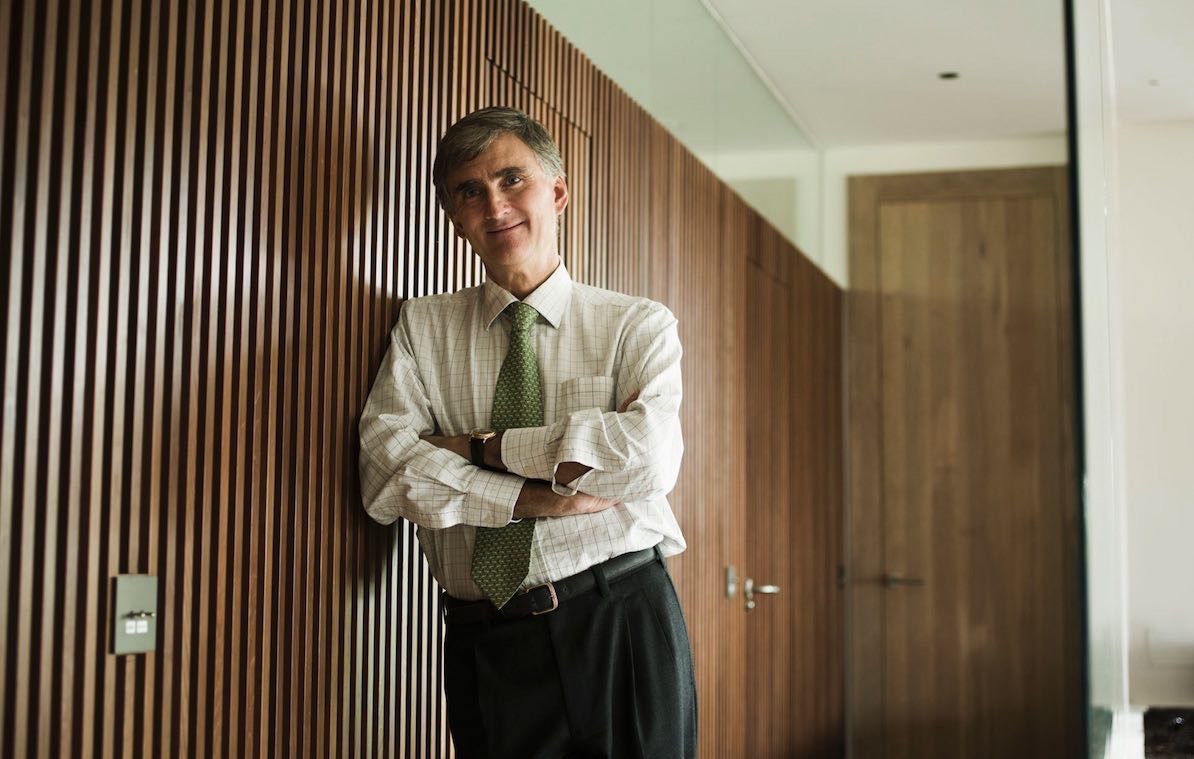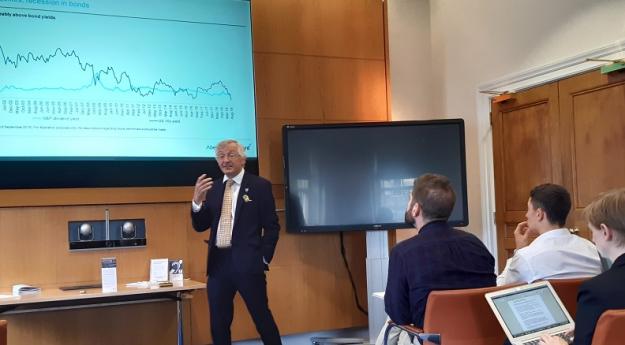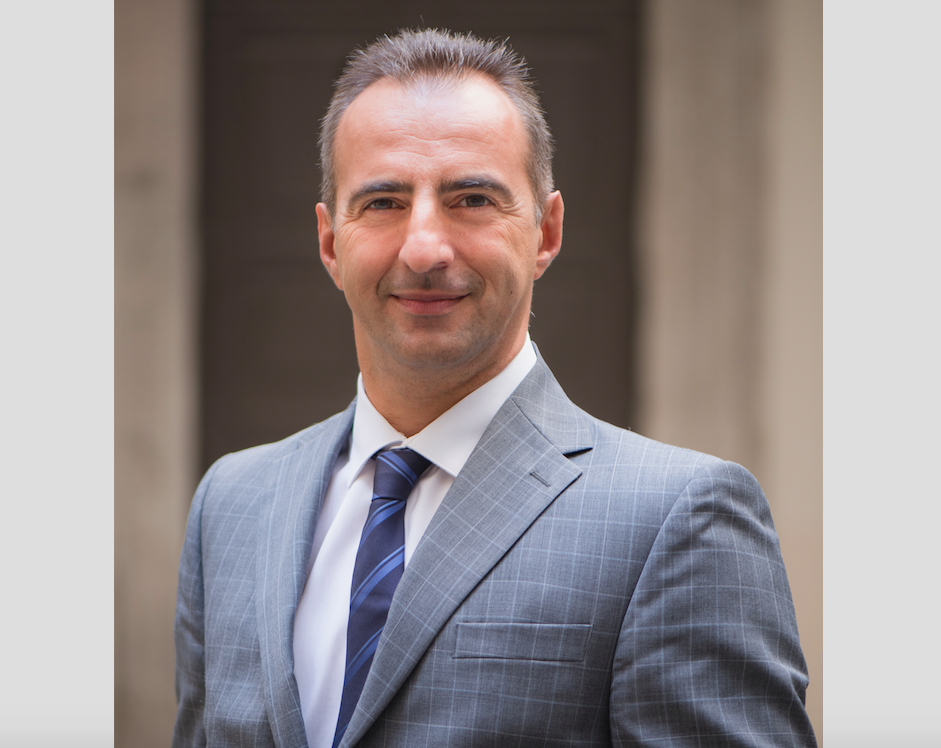¿Qué sucede con la renta fija high yield en momentos de estrés en el mercado?
| Por Meritxell Sedo | 0 Comentarios

El contexto macroeconómico actual está creando desafíos para los inversores. El crecimiento global es más lento y la inflación benigna. Mientras tanto, los bancos centrales parecen haber regresado a políticas más acomodaticias y las tensiones geopolíticas han aumentado.
Según indica Jonathan Harris, director de inversiones en renta fija en Schroders, los periodos de recesión del ciclo económico, a menudo causadas por condiciones económicas adversas, pueden conducir a una serie de tendencias que son negativas para los inversores de bonos high yield.
Por ejemplo, algunas empresas sufren una rebaja en sus calificaciones crediticias, lo que impacta su capacidad para pedir prestado y puede forzar a algunos inversores a vender sus bonos. Puede que haya un número mayor de empresas que tienen dificultades para pagar el interés de su deuda a medida que las condiciones comerciales se vuelven más difíciles y sus ventas disminuyen. También puede haber una venta más generalizada de activos más riesgosos, como bonos de alto rendimiento, ya que los inversores buscan reducir el riesgo de sus carteras o reaccionar ante titulares de noticias negativas.
Como era de esperar, considerando el contexto económico actual, algunos inversores están cada vez más nerviosos por asumir riesgos.
¿Qué es la deuda high yield?
Los bonos corporativos (bonos emitidos por empresas) son clasificados de acuerdo con las fortalezas o debilidades de la empresa y de lo arriesgado que es prestarle el dinero (con la compra de sus bonos). En el extremo de mayor calidad, con un menor riesgo, se sitúa la deuda con calificación AAA. Los bonos con calificación AAA, A o BBB se consideran bonos de inversión; mientras que los bonos con calificación BB, B, CCC, CC o C son clasificados como deuda high yield. Los bonos high yield o de alto rendimiento se consideran más arriesgados y, como tales, pagarán un mayor nivel de intereses para el tenedor del bono o prestamista. Sin embargo, con un mayor nivel de riesgo llegan unas recompensas de inversión potencialmente atractivas.
La deuda high yield tiende a recuperarse rápidamente y fuertemente
El momento en el que se realiza una inversión claramente juega un papel determinante a la hora de determinar los rendimientos. A menudo tiene sentido invertir después de que los mercados se han caído, cuando las valoraciones se han vuelto más bajas o baratas. Este ha sido el caso de la deuda corporativa high yield, que ha demostrado resiliencia con el paso del tiempo, repuntando fuertemente después de las ventas masivas en el mercado.
Aunque esto respalda el adagio de la inversión “compra en la caída” (es decir, comprar activos después de una caída en valor), el análisis detallado es crucial para identificar esas oportunidades de compra. La siguiente gráfica ilustra ese efecto rebote como lo muestra el alto rendimiento global durante los últimos periodos de estrés del mercado.

Esto también se demuestra claramente si miramos a la pasada crisis financiera global. En 2008, el mercado paneuropeo de deuda high yield tuvo un rendimiento de un -31% y el mercado de deuda high yield estadounidense de un -26%. Ambos mercados repuntaron con fuerza el año siguiente, con el mercado paneuropeo obteniendo una rentabilidad del 85% y el mercado estadounidense del 58%. Y cada uno de los mercados logró unas ganancias superiores al 15%, en 2010.

Entre finales de 2007 y 2010, los índices de deuda high yield estadounidense y paneuropeos obtuvieron unos rendimientos del 34% y 31% respectivamente, o un 10% y 9,5% anualizado. El gráfico a continuación muestra el rendimiento total, esto es los cambios en el precio del bono más el rendimiento pagado sobre los bonos. El principal impulsor de los rendimientos durante este periodo, y de hecho en el largo plazo, son los intereses recibidos.

Mientras que esto parece algo atractivo, un mayor nivel de rentas o de tipos de interés también refleja el nivel de riesgo en el que se está involucrado. En particular, existe un mayor riesgo de que una empresa de alto rendimiento no pueda hacer frente a un pago periódico de intereses.
Esto no quiere decir que el rendimiento del bono necesariamente proporcionará un reflejo justo o exacto del riesgo. Si el rendimiento es alto, puede que esté exagerando el riesgo, en ese caso los bonos pueden ser particularmente atractivos. Los emisores de deuda high yield son a menudo empresas más pequeñas en áreas más especializadas. Como tales, no es inusual que los rendimientos se desincronicen con los fundamentales de la empresa.
Las empresas que emiten bonos están obligadas por los términos del “bono” o “contrato” a pagar intereses y, en última instancia, a pagar a los tenedores de los bonos que se establecen en la documentación legal. Este no es el caso con los ingresos de las acciones, que se paga en forma de dividendos, que son pagados a discreción del equipo directivo de la empresa y dependiendo de los resultados de la empresa.
Las actuales incertidumbres globales ciertamente requieren un enfoque de inversión prudente y juicioso. Los inversores tienen razón al pisar con cuidado, ciertamente en relación con las clases de activo de más riesgo. Sin embargo, también tiene sentido tener en cuenta las características únicas y, a veces más sutiles, de los diferentes mercados al construir carteras y tomar decisiones de inversión.
Información importante:
Riesgo asociado con la inversión en bonos.
Un incremento en las tasas de interés suele generar una caída en los precios de los bonos.
Un declive en la salud financiera de un emisor puede causar que el valor de sus bonos caiga o quede sin valor.
El valor de las inversiones y las rentas derivadas de éstas pueden caer y pueden subir y los inversores pueden no recuperar el importe originalmente invertido.











